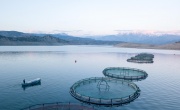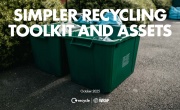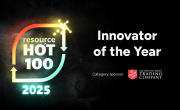New resource efficiency guide for businesses

Image taken from 'A Practical Path to Resource Efficiency’
Environmental company LRS Consultancy and law firm Burges Salmon have today (26 November) launched a new guide that gives businesses ‘practical guidance on how to become more resource efficient’.
The guide, ‘A Practical Path to Resource Efficiency’, is aimed at manufacturers, retailers and brand managers, as well as their supply chain partners, to give them a ‘better understanding of how resource efficiency can benefit them’ and provide ‘new ideas about how to make better use of materials and energy’.
Case studies and self-assessment
The guide highlights how companies have looked at their business and supply chains and implemented resource efficiencies. It also tries to help companies understand what they should consider in terms of materials and energy security to make their supply chains ‘more resilient’.
For instance, it provides two case studies to demonstrate what resource efficiency should ‘look like’ – ‘adapting and adopting supply chain models’ to render waste a valuable resource rather than an ‘inconvenient byproduct’. These are:
- Fortune Cookies, a Dutch manufacturer of specialist biscuits, the trimmings of which it now sells to a fast food chain for their desert range; and
- British Sugar’s Cornerways tomato nursery that utilises hot water from its combined heat and power (CHP) plant and carbon dioxide from its sugar refinery to warm the greenhouse and promote tomato growth.
’Improving resource efficiency can deliver huge benefits’
Speaking of the launch of the guide, Dee Moloney, Managing Director of LRS Consultancy, said: “ Businesses planning for their future should collaborate with their supply chain partners now to understand their collective commercial risks and opportunities and take actions to ensure they remain economically, environmentally and socially sustainable in tough economic times.
“Fully circular or closed loop supply chains are often seen as the desired business model in terms of resource efficiency. However, in many cases, less complex and lower cost approaches to improving resource efficiency can deliver huge benefits across the supply chain within a relatively short time."
Nick Churchward, Partner in the Energy & Environment Team, Burges Salmon LLP, added: "Many businesses are realising the financial and reputational importance of making their operations more sustainable… In our guide, ‘A Practical Path to Resource Efficiency’, LRS Consultancy and Burges Salmon bring together some great examples of how UK businesses are embracing and benefitting from more sustainable and better ways of working.
“We also provide guidance and advice on how to put the theory into practice, from assessing process efficiency to developing an on-site generation project. There will be something for everyone looking to improve their bottom line and the sustainability of their operations."
Moloney concluded: “We recognise that there is no ‘one size fits all’ solution and hope our guide demonstrates the importance of a range of approaches, such as systems thinking, collaboration, corporate leadership and good business practice.”
Read ‘A Practical Path to Resource Efficiency’ and consumer response to sustainable business.
Evaluating the impact of natural resource use
In related news, the University of Cambridge Natural Capital Leaders Platform will also today launch a suite of web-based tools to help global businesses ‘better manage the goods and services from nature upon which they rely’.
Launching at the ‘Second Nature: Embedding the Platform’s shared innovation into business’ event at the Royal Society in London this afternoon, the platform will discuss how measuring and managing natural capital can become ‘second nature’ in companies, and has developed web tools for members to help them realise this.
The three tools will: help businesses quantify the financial cost of their impact on natural resources; suggest ways in which to improve their supply chain; and evaluate a business’ social impact in using certain resources.
Andy Wales, Senior Vice President Sustainable Development at SABMiller said: “The inter-connectedness of all resources means that issues such as water scarcity, food and energy security cannot be addressed in silos. As global populations continue to grow, managing the relationships between water, food and energy is only going to become more critical.”
Martin Roberts, Director of the Cambridge Natural Capital Leaders Platform added: “The tools we are launching today are the culmination of 18 months of collaboration between companies, business experts and academics. They are designed to advance businesses’ understanding of the growing pressures on global natural resources and enable companies to respond to resource challenges with approaches that mutually benefit the environment, business and other stakeholders.”
The University of Cambridge Natural Capital Leaders Platform is managed by the University of Cambridge Programme for Sustainability Leadership (CPSL) and aims to promote the protection and efficient use of natural resources.
The ‘Second Nature’ event can be watched via a webinar from 2-4pm today.
Read more about the University of Cambridge Natural Capital Leaders Platform.







